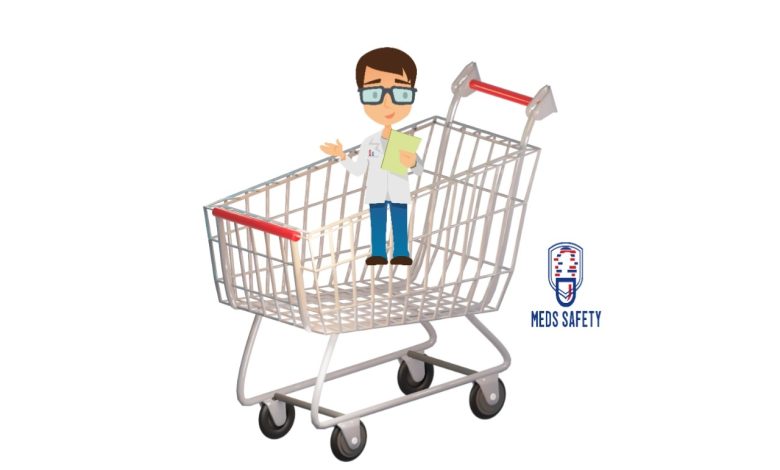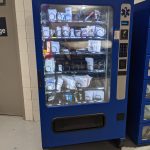Doctor Shopping: Meaning, Signs, Legality, Dangers

What is doctor shopping?
Doctor shopping refers to the practice of seeking medical care or obtaining prescription medications from multiple healthcare providers without their knowledge of each other. It typically involves visiting different doctors, clinics, or hospitals to obtain prescriptions for controlled substances, such as opioids or sedatives, which are subject to abuse and misuse.
The term “doctor shopping” often has a negative connotation because it is associated with deceptive or manipulative behavior. Individuals who engage in doctor shopping may do so to obtain higher quantities of medication than what is medically necessary, to feed a substance abuse problem, or to resell the drugs for profit.
Doctor shopping itself is not categorized as a specific disorder in the current diagnostic classification systems. Instead, doctor shopping is typically considered a behavior or pattern of actions that may be associated with certain underlying mental health conditions or substance abuse issues.
Doctor shopping can be driven by various motivations, including addiction, the desire to maintain a supply of medication, or attempts to bypass regulations or restrictions on prescription drugs. It is important to note that not everyone who visits multiple doctors has malicious intentions; some individuals may genuinely seek second opinions or alternative treatment options. However, doctor shopping typically refers to an intentional and deceptive practice.
Doctor shopping is considered unethical and potentially illegal in many jurisdictions. It undermines the doctor-patient relationship, compromises patient safety, and contributes to the misuse and diversion of prescription medications
Historical Background
The practice of doctor shopping has been present for many years, although its specific historical background can be challenging to trace. Here are some key points that shed light on the historical context of doctor shopping:
1. Rise of Prescription Medications: The use of prescription medications increased significantly during the 20th century, particularly with the development of new pharmaceutical drugs. This led to an increased demand for certain controlled substances, such as opioids, sedatives, and stimulants.
2. Limited Regulations: In earlier decades, regulations surrounding prescription medications were less stringent compared to the present day. Prescription monitoring systems, such as electronic databases, were not as prevalent or sophisticated as they are today. This created an environment where individuals could more easily manipulate the system to obtain multiple prescriptions.
3. Emergence of Substance Abuse Problems: As the availability and use of prescription drugs expanded, so did the prevalence of substance abuse issues. Some individuals discovered that certain medications could be abused for their psychoactive effects or to alleviate pain and discomfort. Doctor shopping became a means for these individuals to acquire a larger supply of drugs for personal use or for illegal distribution.
4. Increased Awareness and Regulations: Over time, healthcare professionals, regulatory bodies, and law enforcement agencies recognized the risks associated with doctor shopping and the misuse of prescription medications. As a result, regulations were tightened, and prescription monitoring programs were implemented to track and identify instances of doctor shopping.
5. Opioid Epidemic: In recent decades, the United States, in particular, has faced a significant opioid epidemic, characterized by widespread misuse and addiction to prescription opioids and illicit opioids like heroin. Doctor shopping played a role in fueling this crisis, as individuals sought multiple prescriptions to support their opioid dependency.
To combat the issues associated with doctor shopping, healthcare systems have implemented measures to detect and prevent it. Prescription drug monitoring programs, state databases that track prescription data, have been established to identify patterns of excessive or inappropriate prescribing. These programs aim to improve patient safety, reduce substance abuse, and ensure responsible prescribing practices.
Overall, the historical background of doctor shopping is intertwined with the evolving landscape of prescription medications, regulations, and substance abuse issues. Efforts to address and prevent doctor shopping continue to evolve as healthcare providers, policymakers, and regulatory agencies work together to mitigate its impact on patient care and public health.
How Many Doctors Is Considered Doctor Shopping?
The specific number of doctors that would be considered doctor shopping can vary depending on the context and jurisdiction. Generally, doctor shopping involves seeking care or obtaining prescriptions from multiple healthcare providers without their knowledge of each other.
In most cases, visiting two or more doctors with the intention of obtaining multiple prescriptions for the same medication or class of drugs could be considered doctor shopping. However, it’s important to note that the definition may also depend on the frequency and timeframe in which these visits occur.
In some jurisdictions, doctor-shopping laws have been established to define and address this practice. These laws often specify criteria such as the number of doctors visited within a specific time period, the intent behind the visits, and the type of medication involved. The specific numbers and criteria can vary from one jurisdiction to another.
It’s crucial to remember that not every patient who sees multiple doctors has malicious intentions. Seeking second opinions, exploring different treatment options, or managing complex medical conditions may require seeing multiple healthcare providers. The term “doctor shopping” typically refers to intentional and deceptive practices with the intent to obtain excessive or inappropriate prescriptions for personal use, misuse, or diversion.
Doctor Shopping Signs
Detecting doctor shopping can be challenging, as it often involves deceptive practices and individuals attempting to hide their activities. However, there are several signs that healthcare providers and professionals can look out for that may indicate potential doctor shopping. These signs include:
1. Multiple visits to different doctors: Patients who frequently visit various healthcare providers, especially within a short period, without a clear medical need or justification, could be engaging in doctor shopping.
2. Inconsistent or incomplete medical history: Patients who provide inconsistent or incomplete medical histories, especially regarding previous treatments, medications, or diagnoses, may be attempting to conceal their doctor-shopping activities.
3. Seeking specific medications or high doses: Individuals who repeatedly request specific medications, especially controlled substances, or higher doses than what is medically necessary, may be using doctor shopping as a means to obtain a larger supply for personal use or resale.
4. Pharmacy hopping: Patients who frequently change pharmacies to fill their prescriptions, especially controlled substances, may be trying to avoid detection by the pharmacy’s prescription monitoring system.
5. Traveling long distances for appointments: Individuals who travel long distances or across jurisdictional boundaries to see different healthcare providers may be trying to access multiple sources of medications or bypass stricter regulations in certain areas.
6. Cash payments: Patients who frequently pay for medical visits or prescriptions in cash rather than using insurance coverage may be attempting to hide their activities and avoid generating a paper trail.
7. History of substance abuse or addiction: Patients with a known history of substance abuse or addiction may be at a higher risk of engaging in doctor shopping to support their addiction or maintain their supply of drugs.
8. Requesting early refills or lost prescriptions: Patients who frequently request early refills of their medications or claim to have lost their prescriptions multiple times may be indicating potential doctor-shopping behavior.
It’s important to note that these signs should not be used in isolation to make definitive conclusions about doctor shopping. They should be considered in the context of the patient’s overall medical history, behavior, and other relevant factors. If healthcare providers suspect doctor shopping, they should follow established protocols, consult with colleagues or regulatory authorities, and utilize prescription monitoring programs to gather more information and take appropriate action.
How You Get Caught Doctor Shopping
Healthcare providers and regulatory authorities employ various methods and tools to catch individuals who are doctor shopping. Here are some common strategies used to detect and prevent doctor shopping:
1. Prescription Drug Monitoring Programs (PDMPs): PDMPs are electronic databases that track the prescribing and dispensing of controlled substances. Healthcare providers and pharmacists can access these databases to review a patient’s prescription history and identify any patterns of excessive or inappropriate medication use. PDMPs enable healthcare professionals to spot cases of doctor shopping by detecting multiple prescriptions or overlapping supplies from different providers.
2. Data Analysis and Algorithms: PDMPs and other systems may use data analysis techniques and algorithms to identify suspicious patterns. These algorithms can flag individuals who exhibit behaviors associated with doctor shopping, such as multiple visits to different doctors or pharmacies, obtaining prescriptions for the same medication from multiple providers, or receiving excessive quantities of medications.
3. Collaboration and Communication: Healthcare professionals, pharmacies, and regulatory bodies can collaborate and share information to identify potential cases of doctor shopping. Enhanced communication and information sharing among providers and pharmacies can help identify individuals who are seeking care or medications from multiple sources.
4. Training and Education: Healthcare providers and pharmacists receive training and education to recognize signs of doctor shopping and become familiar with guidelines and best practices for responsible prescribing and dispensing of medications. This knowledge equips them to identify suspicious behaviors and take appropriate action.
5. Patient Interviews and Screening Tools: Healthcare professionals may conduct thorough interviews and use screening tools to assess a patient’s medical history, symptoms, and previous treatments. These interactions can help uncover discrepancies, inconsistent information, or signs of doctor shopping.
6. Compliance Monitoring: Regulatory bodies and authorities may conduct audits and inspections of healthcare practices and pharmacies to ensure compliance with prescribing and dispensing regulations. These measures can help identify instances of doctor shopping or other irregularities.
It’s worth noting that catching individuals engaged in doctor shopping requires a combination of vigilance, comprehensive data analysis, communication, and adherence to regulatory guidelines. Prescription monitoring programs and other detection methods continue to evolve and improve to effectively identify cases of doctor shopping and mitigate the risks associated with inappropriate medication use.
Doctor Shopping Vs Second Opinion
Both doctor shopping and seeking a second opinion may involve visiting multiple doctors, the key distinction lies in the underlying motivation. Doctor shopping is driven by deceptive intentions and inappropriate use of medications while seeking a second opinion is motivated by the desire for additional information and perspectives to make informed healthcare decisions.
It’s important to communicate openly with healthcare providers about the reasons for seeking a second opinion and to ensure transparency and continuity of care. In contrast, doctor shopping undermines the doctor-patient relationship, compromises patient safety, and contributes to the misuse and diversion of prescription medications.
Legality
Doctor shopping is generally considered illegal across the United States due to its association with prescription drug abuse, diversion, and fraud. However, the specific laws and regulations related to doctor shopping can vary among states. It’s important to note that I can provide general information, but for accurate and up-to-date details on the legality of doctor shopping in a particular state, consulting legal resources or professionals is advisable.
In response to the opioid epidemic and the misuse of prescription medications, many states have implemented Prescription Drug Monitoring Programs (PDMPs) which help to identify individuals who engage in doctor shopping or other inappropriate behaviors related to prescription drugs. Healthcare providers and pharmacists are required to access and utilize these databases to ensure responsible prescribing and dispensing practices.
Additionally, federal laws, such as the Controlled Substances Act, regulate the prescribing and dispensing of controlled substances throughout the country. These laws aim to prevent the misuse, abuse, and diversion of prescription drugs, including through the practice of doctor shopping.
The penalties for doctor shopping can vary depending on the jurisdiction and specific circumstances of the case. In the United States, doctor shopping can be considered a criminal offense, typically falling under drug-related or fraud-related laws. The severity of the penalties can depend on factors such as the number of doctors involved, the type and quantity of medications obtained, the intent behind the behavior, and the individual’s previous criminal history.
The potential consequences of doctor shopping may include:
1. Criminal Charges: Individuals who engage in doctor shopping may face criminal charges, such as fraud, drug trafficking, prescription drug-related offenses, or obtaining controlled substances by deceit or misrepresentation.
2. Imprisonment: If convicted, individuals may face imprisonment as part of their sentence. The length of the prison term can vary depending on the specific laws of the jurisdiction, the severity of the offense, and other factors.
3. Fines: Doctor shopping convictions can also result in financial penalties, including fines, which are intended to deter such behavior and provide restitution.
4. Probation or Parole: In some cases, individuals convicted of doctor shopping may be placed on probation or parole, requiring them to adhere to specific conditions and supervision for a designated period. Violation of these terms can lead to further legal consequences.
The penalties for doctor shopping can vary widely, and it’s essential to consult legal professionals or authorities in your jurisdiction for accurate and up-to-date information on the potential consequences of doctor shopping in your specific area.





